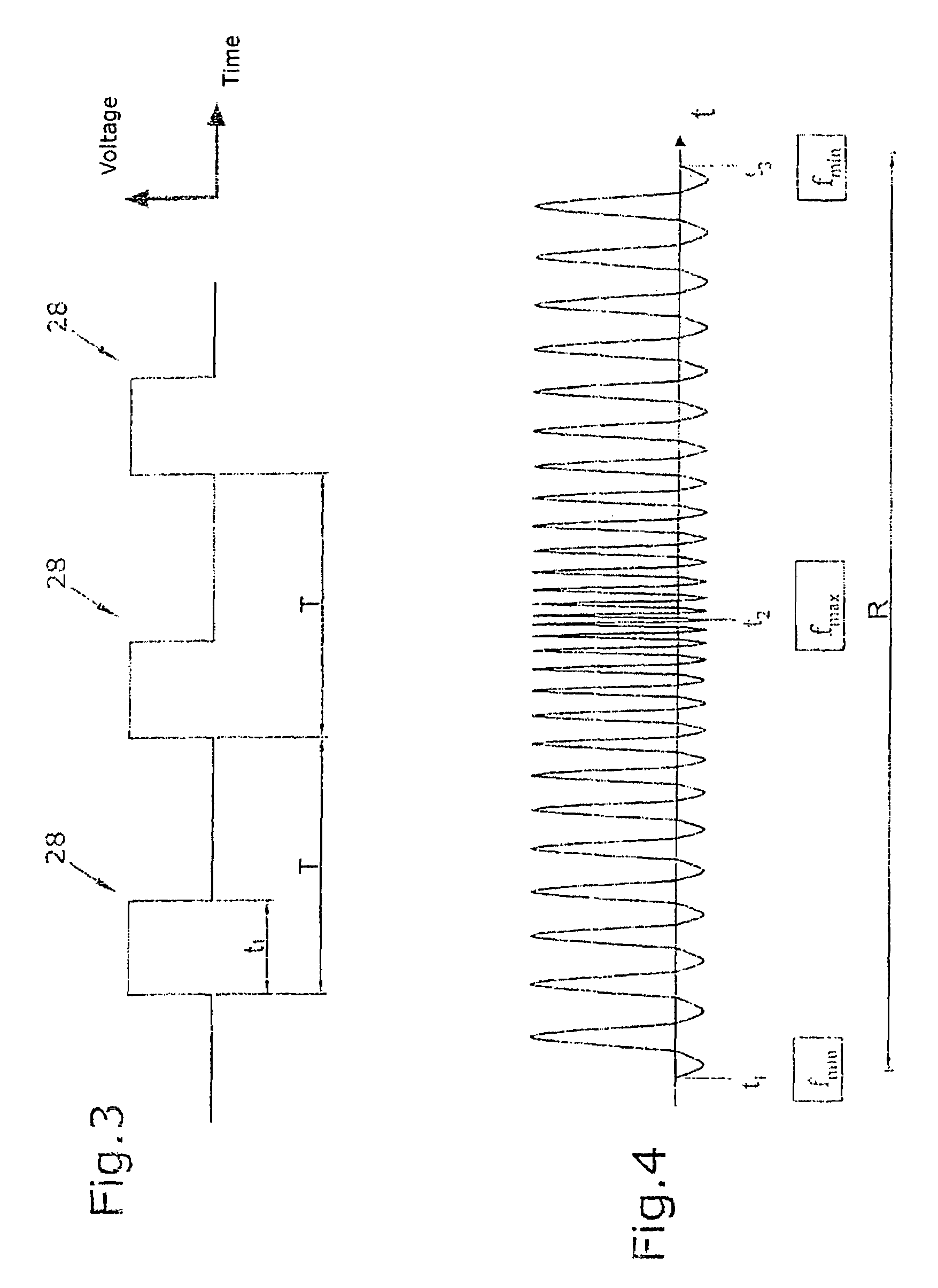Dispensing method
a technology of dispensing method and liquid chamber, which is applied in the direction of liquid dispensing, combustion process, lighting and heating apparatus, etc., can solve the problems of micropumps being produced in liquid, surface tension effect may impair the perfect function of such micropumps, and micropumps are very liable to fault, etc., to achieve the effect of reducing cleaning time, facilitating cleaning, and reducing cleaning tim
- Summary
- Abstract
- Description
- Claims
- Application Information
AI Technical Summary
Benefits of technology
Problems solved by technology
Method used
Image
Examples
Embodiment Construction
[0017]The liquid delivery device 10 illustrated in FIGS. 1 and 2 is, e.g., a dispensing device. It comprises a liquid chamber 12 connected with a reservoir via a channel 14. In a dispensing device, the reservoir contains the sample liquid dispensed in the form of drops 18 through a nozzle or the capillary channel 16. If necessary, the liquid chamber 12 is further connected with another reservoir containing flushing liquid for performing a cleaning step. A piezo actuator 20 acts upon the liquid in the liquid chamber 12. The piezo actuator 20 acts upon an elastic wall 22 of the liquid chamber 12. By applying a voltage to the piezo actuator 20, the elastic wall 22 is deformed and a pressure pulse is exerted upon the liquid in the liquid chamber 12. Thereby, a drop 18 is delivered, e.g., toward a microtiter plate 24 for filling wells 26 located in the microtiter plate 24.
[0018]The excitation pulse form shown in FIG. 3 is a possible voltage pulse sequence applied to the piezo actuator 20...
PUM
| Property | Measurement | Unit |
|---|---|---|
| frequency | aaaaa | aaaaa |
| frequency | aaaaa | aaaaa |
| volume | aaaaa | aaaaa |
Abstract
Description
Claims
Application Information
 Login to View More
Login to View More - R&D
- Intellectual Property
- Life Sciences
- Materials
- Tech Scout
- Unparalleled Data Quality
- Higher Quality Content
- 60% Fewer Hallucinations
Browse by: Latest US Patents, China's latest patents, Technical Efficacy Thesaurus, Application Domain, Technology Topic, Popular Technical Reports.
© 2025 PatSnap. All rights reserved.Legal|Privacy policy|Modern Slavery Act Transparency Statement|Sitemap|About US| Contact US: help@patsnap.com



